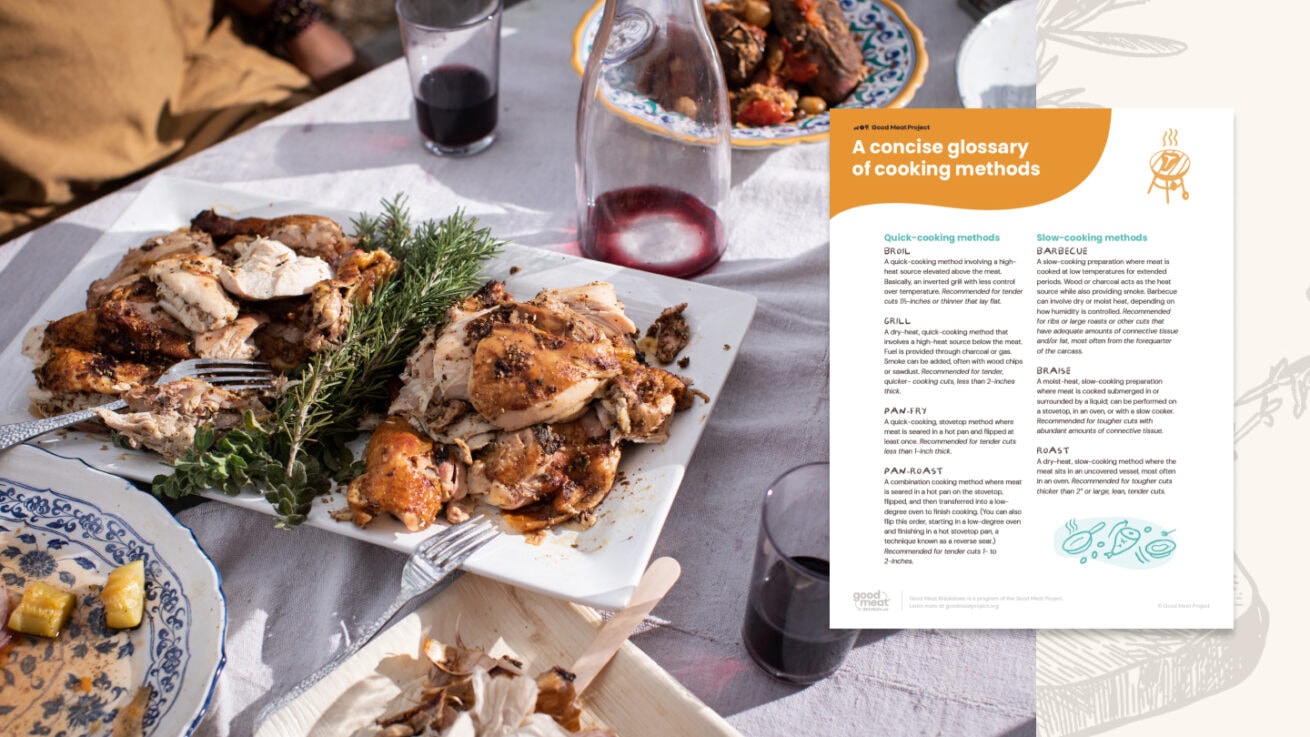
Related article
Let's break down the best ways to cook all those cuts.
Good Meat BreakdownCookingSeason of the Chef
Let's build a Good Meat® movement today.
Donate today!
Toasted, caramelized, crispy, charred, aromatic, sizzled n’ seared…the most mouth-watering qualities of our favorite foods boils down to this relatively simple chemical process: The Maillard reaction. Learn how to get the perfect sear every time with this simple cooking concept.
One of the keys cooking mouth-watering meat every time is a basic understanding of the Maillard (pronounced like “my yard”) reaction, a series of chemical reactions that happens between proteins and sugars when they’re cooked together over high heat. In addition to giving meat that brown, crispy crust and flavor, it’s also the reason why we love s’mores, french fries, grilled cheese, grilled vegetables, coffee beans, crème brûlée, caramel, and more. And it’s not just about superior flavor. The Maillard reaction is also about color and aroma. A properly seared piece of meat will have eye-catching contrasts of deep, caramel, brown hues, and a mouth-watering aroma.
Sear the meat in a hot pan at the beginning or end of the cook to make sure you get all the good flavor from the Maillard reaction, even in a low, slow cook.
Cook quickly in a hot pan, usually for just a few minutes on each side. Got the perfect sear but not cooked in the middle? Finish in the oven so it doesn’t burn. You can also try a “reverse sear,” where you first cook the meat on a low temperature in the oven first, and then sear it in a hot pan for a perfectly browned crust.
Cook skin-side down in a hot pan for a crispy crust before cooking in the oven. Pasture-raised poultry can be a little leaner than conventionally-raised, so keep the skin on when possible. The fat will render into the meat for deliciously caramalized exterior and juicy, flavorful interior.
Grassfed and pasture-raised animals have a more diverse diet than conventionally raised animals, which means the meat tends to be leaner and cook a little faster. Use a meat thermometer and cook to 5-10 degrees below your desired internal temperature. Then let the meat rest for 5-15 minutes. The meat will continue cooking even after you take it off the heat, so resting is key making sure that it reaches food safe temperatures without overcooking (you can check food safe minimum internal temperatures here).
Ask your farmer! If you purchased local, grassfed or pasture-raised meat, we can assure you that you have quality meat that was raised with care. If it didn’t turn out quite right, reach out to your farmer and ask for tips. They know the best ways to cook their meat and they’ll want to share! With a little practice, you’ll become the master of perfectly cooked meat, everytime.
Now that you’ve got the sear down pat, let’s introduce you to other cooking methods from our Concise Glossary of Cooking Methods.

Related article
Let's break down the best ways to cook all those cuts.

Sign up for our newsletter. We’ll keep you informed and inspired with monthly updates.